Start with simple shapes like spheres and cubes to build confidence. Focus on your breath to stay calm and centered while working. Explore different textures using household items for unique patterns. Embrace imperfections as part of your creation's character. Practice mindful kneading, paying attention to the clay's feel and temperature. Set realistic expectations and celebrate small wins. Experiment with various clay types to find your preferred medium. Use guided imagery to visualize your project before starting. Incorporate aromatherapy to enhance relaxation and creativity. Remember, clay modeling is about the journey, not perfection. Discover how these techniques can transform your anxious energy into artistic expression.
Start With Simple Shapes

[TEXT]:
Why complicate things when you're just starting out? Simple shapes form the foundation of clay modeling and help you build confidence.
Begin with basic forms like spheres, cubes, and cylinders. These shapes are easy to create and can be combined to form more complex structures.
Practice rolling clay into smooth balls of various sizes. Experiment with cubes by pressing the clay into a flat square and then folding the edges up. For cylinders, roll the clay into a long snake and smooth out the sides. As you work, focus on creating clean, even surfaces and sharp edges.
Once you've mastered these basic shapes, try combining them. Stack spheres to create a snowman or arrange cubes to form a building. Use cylinders as limbs for simple animal figures.
Pay attention to proportion and balance as you connect different shapes.
Breathe Through the Process
As you explore clay modeling, it's crucial to remember that breathing is an integral part of the creative process. When you're feeling anxious or overwhelmed, take a moment to focus on your breath. Inhale deeply through your nose, hold it for a few seconds, and exhale slowly through your mouth. This simple technique can help calm your nerves and center your mind.
As you work with the clay, synchronize your movements with your breath. When you're kneading or shaping, inhale as you apply pressure and exhale as you release. This rhythm can help you maintain a steady pace and prevent tension from building up in your body.
If you find yourself getting frustrated or stuck, pause and take a few deep breaths. Use this moment to step back and reassess your work. Often, a short break and some mindful breathing can provide fresh perspective and renewed creativity.
Focus on Texture
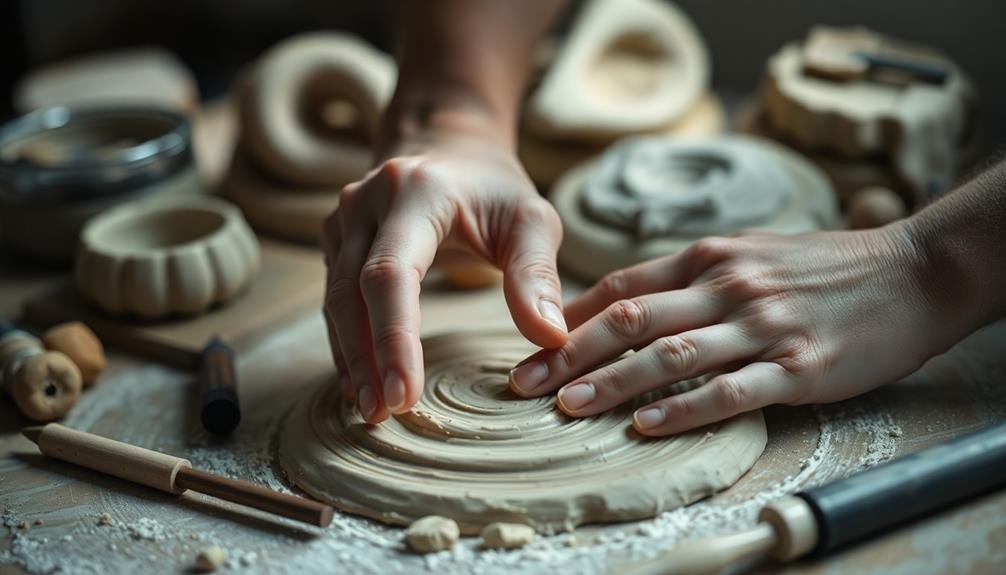
Exploring texture in clay modeling can open up a world of creative possibilities. As you work with the clay, focus on the various textures you can create. Run your fingers over the surface, feeling its smoothness or roughness. You'll notice how different tools and techniques produce unique textures.
Try using a variety of objects to imprint patterns onto your clay. Experiment with household items like forks, combs, or even leaves from your garden. Each will leave a distinct impression, adding depth and interest to your creation.
Don't be afraid to mix textures within a single piece – contrast smooth areas with rough ones for visual appeal.
Pay attention to how the clay feels as you manipulate it. Knead it, roll it, and pinch it to create different effects. You can also try scoring the surface with a needle tool or adding small clay pieces for a raised texture.
Embrace Imperfections
When you're working with clay, remember that imperfections can add character and charm to your creations.
Don't aim for flawless perfection; instead, embrace the unique quirks and textures that naturally emerge as you shape the material.
Beauty in Flaws
Why do we often endeavor for perfection in our clay creations? It's natural to want flawless results, but this pursuit can stifle creativity and increase anxiety. Instead, try to see the beauty in flaws. Embrace the unique quirks and unexpected outcomes that arise during your clay modeling process.
Consider how nature's imperfections often create stunning visual interest. A tree's gnarled branches or a rock's uneven surface can be enchanting. Apply this perspective to your clay work. That unintended dent or asymmetrical edge might add character to your piece. Learn to appreciate these "happy accidents" as opportunities for creativity rather than mistakes to be corrected.
Intentionally incorporate imperfections into your designs. Try adding texture with fingerprints or tool marks. Experiment with irregular shapes or deliberately mismatched elements.
You'll find that these flaws can make your creations more interesting and personal. Remember, perfection isn't the goal; authentic expression is. By embracing imperfections, you'll reduce anxiety, enjoy the process more, and create pieces that reflect your unique artistic voice.
Let Go of Perfection
Through the pursuit of perfection, we often lose sight of the joy in creating. When working with clay, it's essential to embrace imperfections and let go of the need for flawless results.
Remember, each piece you create is unique, reflecting your personal touch and creative journey.
As you model your clay, focus on the process rather than the outcome. Allow your hands to explore the material's texture and malleability without judgment.
If you notice yourself becoming frustrated with perceived flaws, take a deep breath and remind yourself that these "imperfections" add character to your work.
Experiment with different techniques and don't be afraid to make mistakes. These so-called errors can lead to unexpected discoveries and innovative designs.
Embrace the unpredictable nature of clay and let it guide your creativity.
Celebrate Unique Creations
Every clay creation tells a unique story. As you mold and shape your piece, you're infusing it with your personality, emotions, and experiences. Embrace the quirks and imperfections that emerge during the process, as they make your work truly one-of-a-kind.
Instead of aiming for flawless symmetry or smooth surfaces, learn to appreciate the organic forms and textures that develop naturally.
Celebrating your unique creations isn't just about the final product; it's about recognizing the value in your artistic journey. Here's why embracing imperfections matters:
- It fosters self-acceptance and reduces anxiety
- It encourages experimentation and creativity
- It helps you develop your own artistic style
- It reminds you that art is subjective and personal
As you work with clay, pay attention to the unexpected details that emerge. Maybe there's a fingerprint left behind or an uneven edge that adds character.
These "flaws" aren't mistakes; they're signatures of your handiwork. By celebrating these unique elements, you'll find more joy in the process and develop a deeper connection to your art.
Practice Mindful Kneading
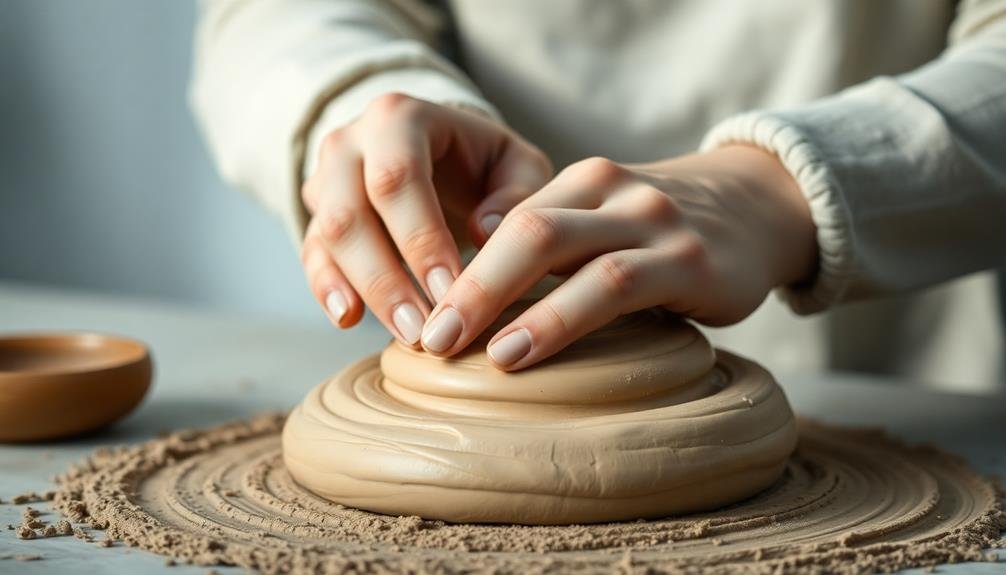
As you knead the clay, pay close attention to the physical sensations in your hands and fingers.
You'll find comfort in the repetitive movements, allowing your mind to settle into a rhythmic flow.
Through this process, you can channel any stress or tension into the clay, using it as a tactile outlet for release.
Focus on Physical Sensations
Immerse yourself in the tactile experience of clay modeling by focusing on the physical sensations during kneading. As you work the clay, pay attention to its temperature, texture, and malleability. Notice how it warms up and becomes more pliable as you handle it.
Feel the resistance of the clay against your palms and fingers, observing how it changes as you apply different pressures. By concentrating on these physical sensations, you'll deepen your connection to the material and the present moment. This mindful approach can help reduce anxiety and promote relaxation.
To enhance your focus on physical sensations, try these techniques:
- Close your eyes periodically to heighten your sense of touch
- Vary your hand movements to explore different textures and pressures
- Take deep breaths and synchronize them with your kneading rhythm
- Mentally describe the sensations you're experiencing in detail
As you practice focusing on physical sensations, you'll find that your mind becomes less cluttered with anxious thoughts. This increased awareness of the clay's properties will also improve your modeling skills, allowing you to work more intuitively and creatively.
Embrace Repetitive Movements
Once you've familiarized yourself with the clay's physical properties, it's time to embrace the repetitive movements of mindful kneading. This practice can be incredibly soothing and meditative, helping to calm your anxious mind.
Start by taking a small portion of clay and rolling it into a ball. Place it on your work surface and begin pressing it with your palms, using steady, rhythmic motions. As you knead, focus on the repetitive nature of your movements. Notice how the clay responds to your touch, gradually becoming more pliable and warm.
Pay attention to your breathing as you work, inhaling deeply and exhaling slowly. Allow your thoughts to come and go without judgment, always bringing your focus back to the kneading process. You may find it helpful to count your kneads or synchronize them with your breath.
Experiment with different kneading techniques, such as folding the clay over itself or using your fingertips to create textures. Remember, there's no right or wrong way to knead – the goal is to engage in a mindful, repetitive activity that helps quiet your anxious thoughts and connect you with the present moment.
Release Tension Through Clay
While kneading clay can be a meditative practice, it's also an effective way to release physical and emotional tension. As you work the clay with your hands, focus on transferring your stress and anxiety into the material. Imagine the clay absorbing your worries as you squeeze, press, and mold it.
To maximize the tension-releasing benefits of clay kneading, try these mindful techniques:
- Set an intention: Before you begin, clearly state what you'd like to release or let go of during your clay session.
- Use your whole body: Don't limit yourself to just your hands. Engage your arms, shoulders, and even your core as you work the clay.
- Breathe deeply: Sync your breath with your movements, inhaling as you gather the clay and exhaling as you press it out.
- Visualize: Picture your tension as a color or texture that's gradually leaving your body and entering the clay.
As you continue to knead, you'll likely notice your muscles relaxing and your mind becoming calmer.
This physical act of working with clay can serve as a powerful metaphor for transforming your inner state, helping you feel more grounded and centered.
Create a Calming Workspace
A serene workspace is essential for mindful clay modeling. To create a calming environment, start by choosing a quiet area in your home where you won't be disturbed. Clear the space of clutter and unnecessary items, leaving only your clay and essential tools.
Optimize lighting by using soft, warm lights or natural sunlight if possible. Harsh fluorescent lighting can be jarring and disruptive to your focus. Consider adding a small desk lamp for task lighting when needed.
Incorporate natural elements like plants or a small indoor fountain to bring a sense of tranquility to your workspace. The gentle sound of flowing water can be particularly soothing.
Choose comfortable seating that supports good posture, as you'll likely spend extended periods working with clay. A cushioned chair or even a meditation cushion on the floor can work well.
Set the mood with calming background music or nature sounds. Keep the volume low so it doesn't distract from your clay work.
Lastly, verify your workspace is well-ventilated, especially if you're using air-dry clay or other materials that may have strong odors. Open a window or use a small fan to keep the air fresh and circulating.
Set Realistic Expectations

Setting realistic expectations is essential for a mindful clay modeling practice. As a beginner, it's vital to understand that mastery takes time and patience.
Don't expect to create flawless sculptures immediately; instead, focus on the process and the joy of working with clay. Remember that each piece you create is a learning opportunity, regardless of its final appearance.
To help set realistic expectations, consider the following:
- Start with simple projects: Begin with basic shapes and forms before attempting complex sculptures.
- Embrace imperfections: View irregularities as unique characteristics that add charm to your creations.
- Focus on progress, not perfection: Celebrate small improvements in your skills over time.
- Allow for experimentation: Try different techniques and approaches without fear of failure.
Experiment With Different Clays
Experimenting with different types of clay can markedly enhance your mindful modeling experience. Each clay type offers unique properties that affect your sensory engagement and creative process. You'll find that some clays are smoother, while others have more texture. Some dry quickly, while others remain pliable for extended periods.
Start by trying these common clay types:
| Clay Type | Characteristics | Best For |
|---|---|---|
| Polymer | Flexible, colorful | Detailed work |
| Air-dry | No baking needed | Quick projects |
| Earthenware | Natural, earthy | Traditional pottery |
| Porcelain | Smooth, delicate | Fine art pieces |
As you explore, pay attention to how each clay feels in your hands. Notice the temperature, texture, and malleability. Does it warm as you work with it? How does it respond to pressure? These observations will deepen your mindful practice.
Don't be afraid to mix different clays or combine them with other materials. This experimentation can lead to unexpected discoveries and new techniques. Remember, the goal isn't perfection but rather the mindful experience of creating. Let each clay type guide you to new forms of expression and relaxation.
Use Guided Imagery

Tap into the power of your imagination before you start molding clay. You can visualize your intended creation in detail, allowing your mind to explore shapes and textures.
As you work with the clay, try meditating on its feel and malleability, letting your hands intuitively shape your vision.
Visualize Before Creating
Many successful clay artists swear by the power of visualization before putting their hands on the clay. This technique can help you focus your intentions and reduce anxiety about the creative process.
Before you start molding, take a few moments to close your eyes and imagine your finished piece in vivid detail. Picture its shape, texture, and color. Visualize yourself confidently working with the clay, feeling its texture, and bringing your vision to life.
To make the most of this visualization technique, follow these steps:
- Find a quiet, comfortable space where you won't be disturbed
- Take several deep breaths to center yourself and clear your mind
- Imagine your finished piece, focusing on every detail
- Visualize the process of creating it, step by step
As you open your eyes and begin working with the clay, you'll find that you're more focused and less anxious. Your hands will move with greater purpose, guided by the mental image you've created.
This practice not only enhances your creativity but also helps you stay present and mindful throughout the clay modeling process.
Meditate While Molding
Clay modeling can be transformed into a meditative practice by incorporating guided imagery. As you work with the clay, imagine yourself in a peaceful setting, like a serene beach or a tranquil forest. Let this mental image guide your hands as you shape the clay, allowing your mind to focus on the sensory experience.
While molding, pay attention to the texture of the clay and the pressure of your fingers. Visualize stress and tension leaving your body with each movement. You can also use guided imagery to envision the final form of your creation, helping you stay focused and inspired.
Try synchronizing your breath with your clay manipulation. Inhale as you gather or compress the clay, and exhale as you stretch or shape it. This rhythmic breathing will help you maintain a calm, centered state of mind.
Don't worry about perfection; instead, concentrate on the process itself. Let your thoughts flow freely without judgment, treating each moment with the clay as a unique meditation.
Incorporate Aromatherapy
Scent can elevate your clay modeling experience to new heights. By incorporating aromatherapy into your clay modeling sessions, you'll create a more immersive and relaxing environment.
Choose essential oils that promote calmness and creativity, such as lavender, peppermint, or ylang-ylang. Add a few drops to a diffuser or mix them with a carrier oil to apply directly to your skin.
As you work with the clay, focus on the scents around you and how they affect your mood and creativity. You'll find that certain aromas can help you:
- Reduce anxiety and stress
- Enhance focus and concentration
- Boost creativity and inspiration
- Improve overall mood and well-being
Experiment with different scent combinations to find what works best for you. You might discover that citrus oils energize you during daytime sessions, while woodsy scents help you unwind in the evening.
Don't be afraid to switch things up based on your current needs and preferences. Remember, the goal is to create a sensory experience that supports your mindfulness practice while you model clay.
Frequently Asked Questions
How Long Does Clay Typically Take to Dry Completely?
The drying time for clay varies depending on the type you're using. Air-dry clay can take 24-48 hours, while oven-bake clay dries in 15-30 minutes. Pottery clay may take several days to dry completely.
Can I Use Regular Paint on Clay After It Hardens?
You can use regular paint on hardened clay, but it's not ideal. For better results, you'll want to use acrylic paints specifically designed for clay. They'll adhere better and give you a more vibrant, long-lasting finish.
What's the Best Way to Store Unused Clay?
Store your unused clay in an airtight container to prevent drying. You'll want to keep it at room temperature, away from direct sunlight. If it's polymer clay, wrap it in plastic wrap first. Don't forget to label it!
Are There Any Allergies or Sensitivities Associated With Working With Clay?
You may experience allergies or sensitivities to clay dust, chemicals, or metals in some clays. Watch for skin irritation, respiratory issues, or eye problems. If you're concerned, try hypoallergenic clays or wear protective gear when working.
How Can I Fix Cracks That Appear in My Clay Pieces?
To fix cracks in your clay pieces, you'll want to use slip, a mixture of clay and water. Apply it to the cracked area, smooth it out, and let it dry. You can also score the edges before applying slip.
In Summary
You've now got a toolbox of mindful clay modeling techniques to help ease your anxiety. Remember, it's not about creating perfect sculptures, but about the journey of self-discovery and relaxation. As you continue to practice, you'll find your skills improving and your stress melting away. Don't be afraid to experiment and make the process your own. With each pinch, roll, and sculpt, you're molding not just clay, but a calmer, more centered version of yourself.

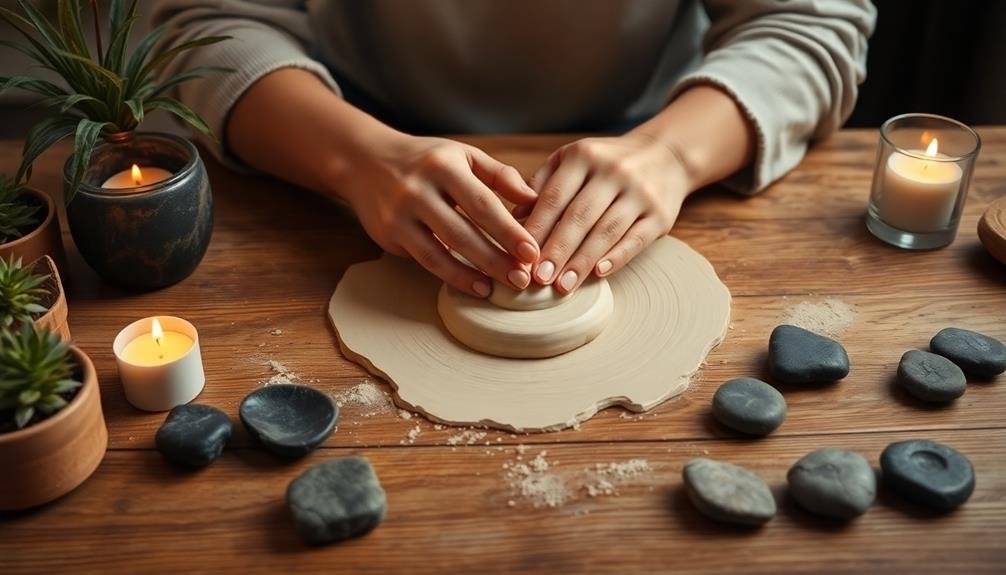

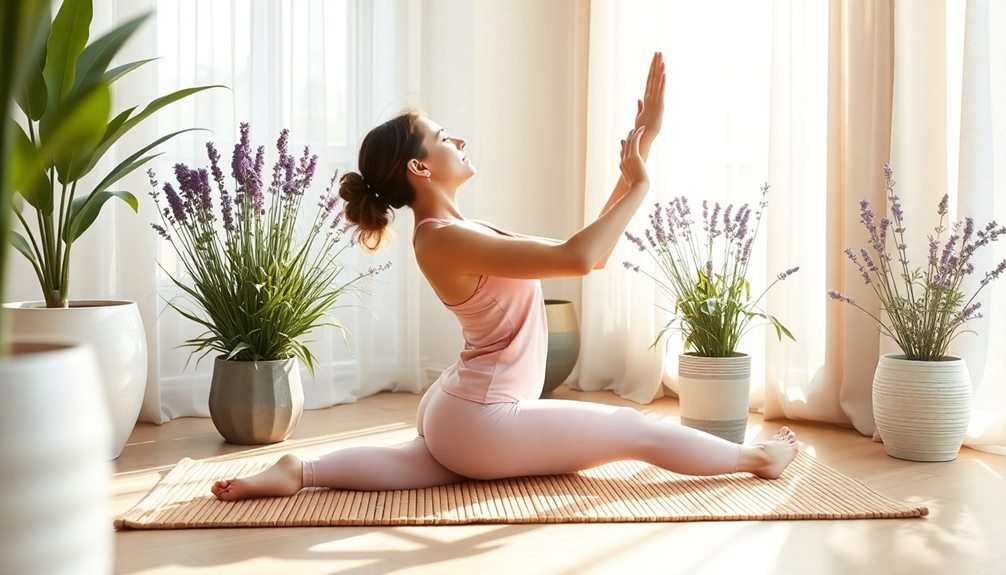
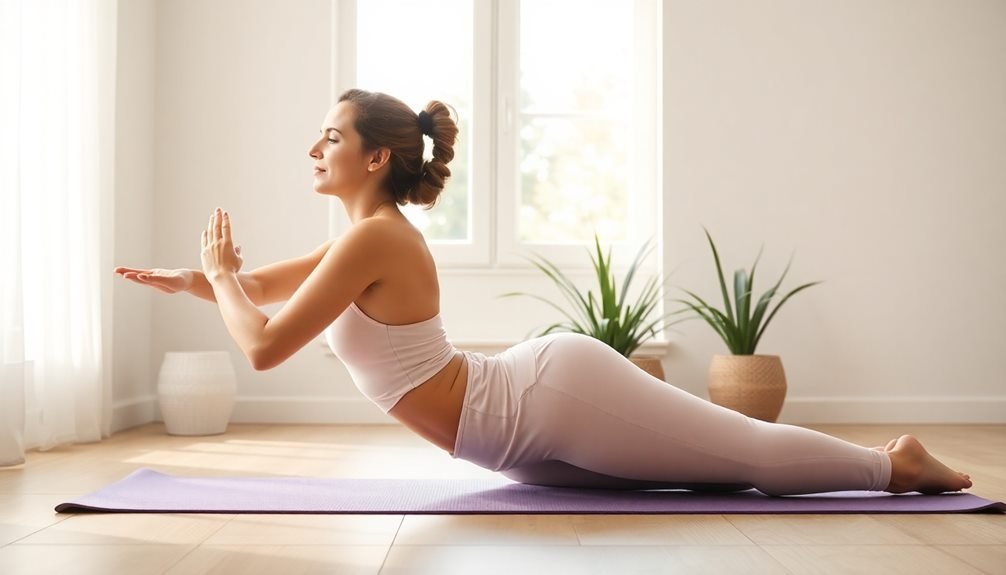
Leave a Reply